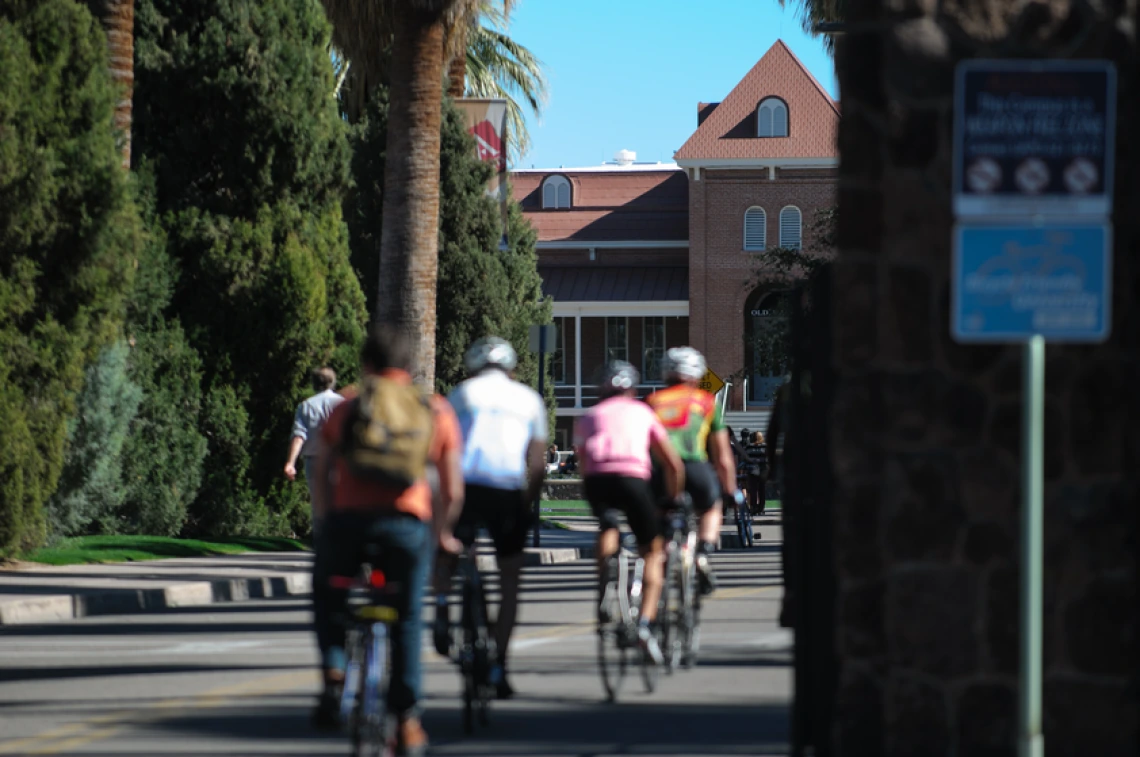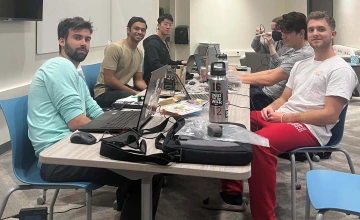Keeping Cyclists in the Comfort Zone

Project Title: Cyclesafe: An automobile proximity sensing, warning, and reporting device for bicycles
Team 23047 members:
Jacob Timothy Wern, systems engineering
Omar Ahmad Al Hilal, electrical and computer engineering
Young-Eun Cho, mechanical engineering
Daniel S. Darnell, mechanical engineering
Shane Henry Jordan, optical sciences and engineering
Addison James Sterner, electrical and computer engineering
Sponsor: Rob Dollar Foundation
Tucson’s sunny weather and open space make it one of the most popular American cities for biking. Unfortunately, a higher number of cyclists means a higher number of cyclist accidents. The city’s government tracks more than 100 bicycle/vehicle collisions every year, with multiple fatalities.

Team 23047
To help reduce these accidents, a team of University of Arizona engineering students is teaming up with the Rob Dollar Foundation, a local cycling nonprofit, to develop Cyclesafe, a device that supports Arizona laws while protecting cyclists.
Cyclesafe is a handlebar-mounted device that detects when a vehicle passes too closely to a cyclist. The device flashes an LED light to alert the driver and photographs the license plate of the dangerously close car. Cyclesafe can even send information to the authorities when a car enters the three-foot passing radius required by Arizona law.
“While Arizona Revised Statute 28-735 gives cyclists the right to have three feet of space, this law is meaningless unless there is a mechanism to enforce it. That is where Cyclesafe comes in,” said project advisor and associate professor of biomedical engineering Daniel Latt.
While an Interdisciplinary Capstone team started the project in 2019, current Team 23047 is aiming to develop a production-ready device while adding features for usability and functionality. The engineering team is 3D printing the device housing, testing security clamps, and using more powerful microcontrollers that are one-third the typical size, yet include both Wi-Fi and Bluetooth capabilities.
“We are looking to leverage this new wireless connectivity to connect to the user’s phone or even upload ride logs to a dedicated server via the user’s home Wi-Fi while the device charges,” said team lead Jake Wern, a systems engineering major. “Due to the reduced size and cost of this processor, we can include a GPS module for geotagging locations, providing law enforcement common locations where cyclists are often impeded on.”
Wern says it’s a challenge to ensure the Cyclesafe, which uses an ultrasonic proximity sensor, will differentiate between passing cars and other objects. For the price range, the team cannot use AI object recognition. However, they can ignore some false readings, such as by detecting if a passing object is not itself moving. So far, their camera can capture license plates on vehicles traveling up to 30 mph.
Because COVID disrupted the original capstone project, Team 23047 is conducting several series of real-world testing. This includes on the students’ own commutes, and planned work with the UA Cycling Club. Wern describes the work as improving the design of the previous students while finally getting to see how it fares during road tests.
“Our group had to use their documentation to make our own first-stage prototype while simultaneously improving that design,” Wern said. “That being said, we are excited about our improvements and looking forward to the rest of the capstone project as we move toward a production-ready product.”

